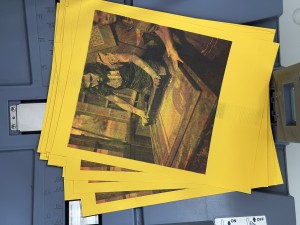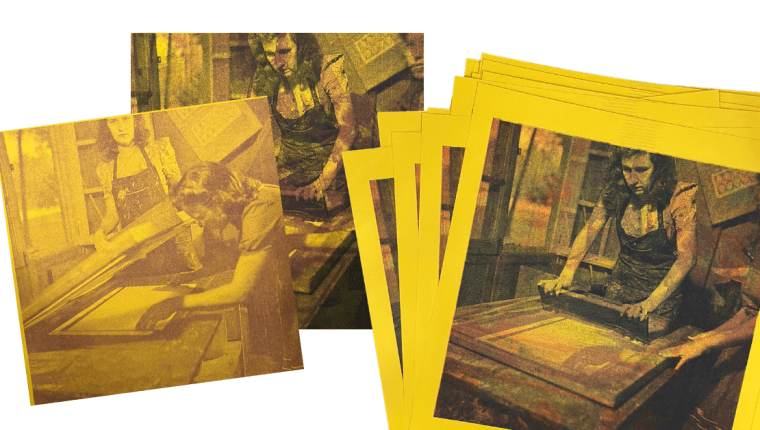Although women have always been part of the printing industry, our work has been historically undervalued and underrepresented. In the 17th and 18th centuries when printing was extremely labor intensive, women often worked as printer’s devils and assistants, despite rarely being included in historical records. Printing as a trade was always seen as “man’s work”, so I’m delighted when I find photos of women in print.
Florida Memory, a project of the State Archives of Florida, is a repository of images that depict life in our state. An old friend and fellow librarian who worked at the State Archives sent me a couple prints of these photographs from 1940 that depict two women screenprinting posters at the NYA’s Camp Roosevelt in Ocala.

From Florida Memory: Camp Roosevelt, located in Ocala just off highway 301/441, was a resident camp first built for the Army Corps of Engineer crews of the Cross Florida Ship Canal (later known as Cross Florida Barge Canal). From 1936 to early 1938, the WPA and the University of Florida assumed ownership for providing adult education classes. Later in 1938, the National Youth Administration (NYA) used it as a girls resident camp in conjunction with the Marion County Vocational School — to educate and provide job skills to young women (later boys were included). During the 1940s, the NYA conducted defense work out of it, before in 1943 it reverted back to the Army Corps of Engineers.
The NYA’s Camp in Ocala offered rural and low income women a chance at economic independence by teaching them skills like silkscreen, that were traditionally gate kept by men. In the late 30’s and early 40’s, silkscreen was being used for commercial posters, as the American advertising industry was taking off. A couple decades later, Andy Warhol would make screenprinting famous as he reproduced images of Marilyn Monroe and Cambell’s soup cans on gallery walls. At the same time, women like Sister Corita Kent, on the other hand, were using silkscreen art to address the civil rights movement and other ongoing social justice issues.

Inspired by these historic photos of women on screens, I overprinted three of the archival images using the Risograph duplicator – the modern cousin of silkscreen – to create a small edition for Women’s History Month. Women may be under-represented in history books, but our contributions to every facet of life are undeniable; May these prints be a humble testament to that.






